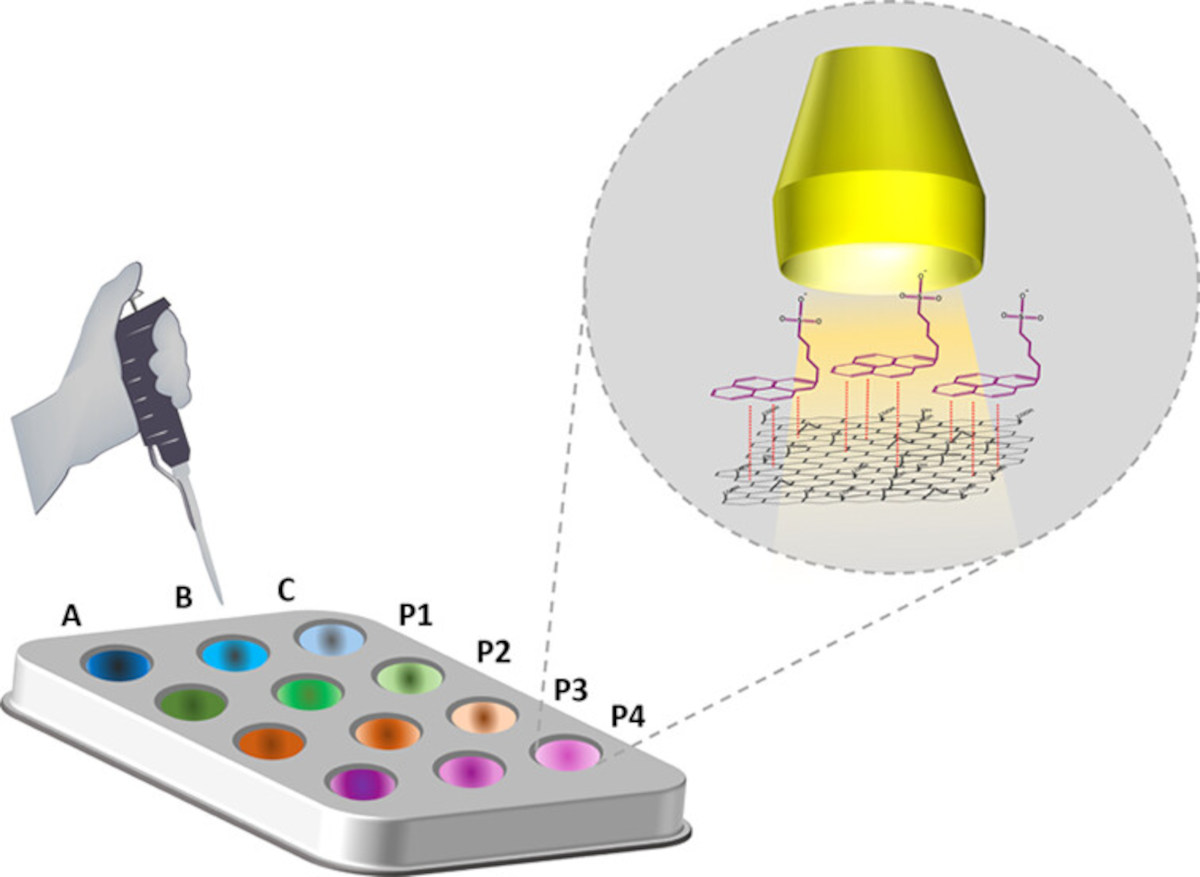Researchers at King’s College London have developed a new approach to characterize graphene-based materials (GBMs), including graphene oxide and graphene, based on surface interactions with a series of probe molecules.
The team at King’s College London designed the new ‘interactional fingerprinting’ method that creates a unique identity of individual samples. By mimicking humans’ sense of taste and smell, the method can create a qualitative snapshot of the material without relying on inaccessible gold-standard measurement machinery manned by teams of specialists. It is said to be more simple and low-cost to perform.
By promising this faster and cheaper way to perform quality control on graphene materials, the scientists hope to remove barriers to exploiting them, unleashing advances in sustainable electronics, cleaner battery technology and more.
The new work uses a first-of-its-kind molecular probing device to characterize GO in a fraction of the time and cost.
Principal author, Dr. Andrew Surman, Senior Lecturer in Chemistry at King’s College London, explains: “Graphene Oxide is really promising. But if we’re to make good progress, we need to confirm that a new batch is like the last one. If your supply is unreliable – and behaves differently every time – how do you go about designing better products? Commercial services to test a new batch are expensive and can take weeks. That’s not often feasible.
“Our approach should allow researchers and materials producers to perform a test in a couple of hours, using cheap tools they likely already have access to, to quickly quality control their samples where they work. By helping teams troubleshoot variation in their supply it helps ensure what they are working with is up to scratch, freeing them up for the important business of innovation in next-generation technology.”
Their method mixes small samples of GO dispersed in water with a series of molecular probes that fluoresce until they interact with the material’s surface.
Because these molecules have been tuned to be sensitive to desirable qualities in the material, such as oxygen level and graphene flake size, the pattern of fluorescence changes across the material can be mapped by mathematical methods to provide an ‘interactional fingerprint’. This characterizing snapshot can then be used to distinguish different kinds of GO, such as those that may be low in oxygen content.
As the device is material agnostic, the authors hope that their probe methodology can be applied to other advanced materials like borophene to facilitate transition out of the lab and into the market.
